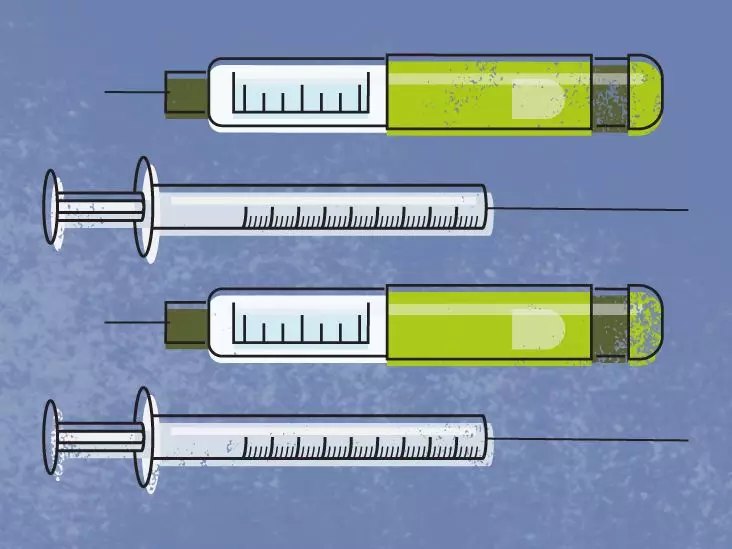Invega Sustenna, containing paliperidone palmitate, represents a significant advancement in the therapeutic landscape for schizophrenia and schizoaffective disorder. As an atypical antipsychotic, this medication is designed not only to alleviate symptoms but also to foster a more stable life for those grappling with these complex mental health conditions. While the drug is administered through a monthly intramuscular injection, it’s crucial to delve into the intricate details of its usage, dosages, and therapeutic implications, providing an insightful understanding that is often overlooked.
Dosage: A Tailored Approach to Treatment
The administration of Invega Sustenna is not a one-size-fits-all regimen; it evolves based on the individual patient’s medical profile and response to treatment. For patients diagnosed with schizophrenia, the regimen typically initiates with loading doses of 234 mg on Day 1 and 156 mg on Day 8. This method is fundamentally designed to quick-start the therapeutic effects of the medication. Following this, the maintenance phase kicks in around five weeks after the first dose, during which the patient receives either 117 mg or adjusted levels based on their clinical response. This tiered approach underscores a vital component of psychiatric treatment: the need for personalization in medication regimens.
The flexibility in dosages, ranging from 39 mg to 234 mg monthly, supports a responsive treatment dynamic. The physician’s role in regularly assessing and adjusting the dosage based on individual progress highlights an imperative aspect of psychiatric care—constant engagement between patients and healthcare providers is essential in navigating the complexities of mental health treatment.
Administration and Monitoring
Administered by qualified healthcare professionals, Invega Sustenna is typically provided in a clinical setting. The preference for intramuscular injections into the upper arm or buttocks highlights not only the significance of proper technique but also the importance of ensuring patient comfort during administration. A delineation of the injection sites enables clinicians to mitigate discomfort, making the treatment experience more palatable.
Despite the favorable dosing structure, the need for continuous monitoring cannot be overstated. As with any antipsychotic, potential side effects must be communicated promptly. The responsibility lies not only with the doctor but also with the patients and their support networks to report any adverse reactions that could hinder the course of treatment. This collaborative effort is crucial in managing symptoms effectively and ensuring the highest quality of care.
Long-Term Commitment to Mental Wellness
The longevity of treatment with Invega Sustenna is indicative of the nature of many psychiatric conditions, which often require sustained interventions rather than quick fixes. This long-term commitment reflects a growing understanding that mental health is not a sprint but rather a marathon requiring ongoing support and management. Patients and their physicians must engage in open dialogues about the medication’s benefits and any potential side effects or concerns. This proactive approach fosters trust and empowerment, allowing patients to feel more in control of their treatment journey.
Moreover, understanding that Invega Sustenna is designed to be part of a broader therapeutic strategy—often coupled with psychotherapy and lifestyle modifications—serves to emphasize that mental health treatment is multifaceted. It is critical for both patients and healthcare practitioners to integrate various modalities, maximizing the potential for recovery and improving overall life quality.
Overdose Risks and Patient Safety
One of the notable aspects of Invega Sustenna is the lowest reported incidence of overdose scenarios when administered correctly by professionals. This characteristic can provide reassurance to patients and families navigating the uncertainties of mental health medications. However, it’s important to remain vigilant regarding signs of overdose linked to related oral medications, as they may differ in their safety profiles. Awareness of symptoms related to overdose ensures that if concerns arise, swift action can be taken—an essential part of safeguarding patient health.
Adopting a proactive mindset about potential side effects and improper dosing reinforces the necessary checks and balances in medication administration. Open lines of communication can significantly lighten the burden on those dealing with mental health challenges, leading to earlier interventions and a more agile response to any critical situation.
The unique profile of Invega Sustenna invites a broad discussion not only about its clinical applications but also about enhancing mental health management practices in a personalized and collaborative manner. As stakeholders in mental health progress, it becomes imperative to optimize the utilization of such medications, embedding them into a holistic approach to mental wellness.

